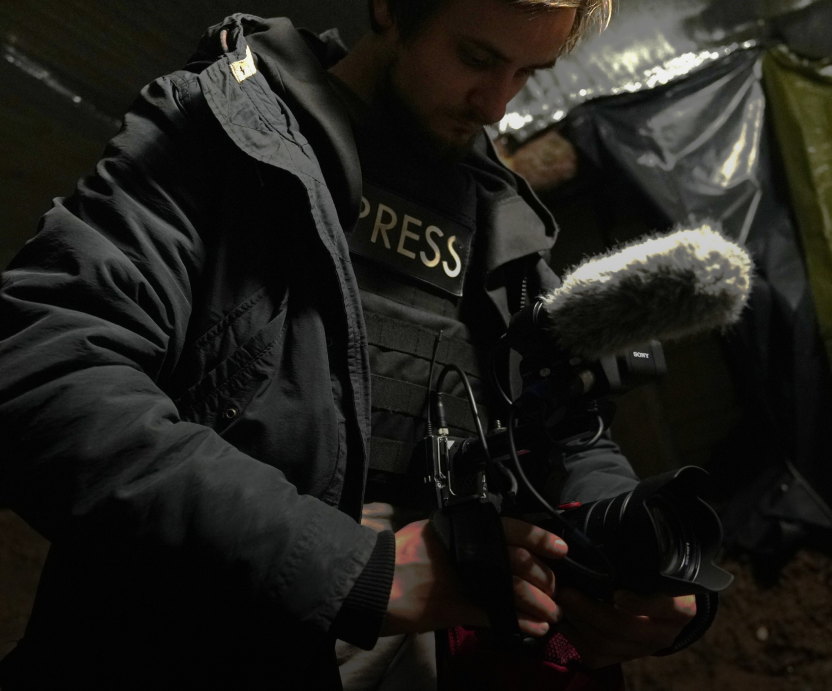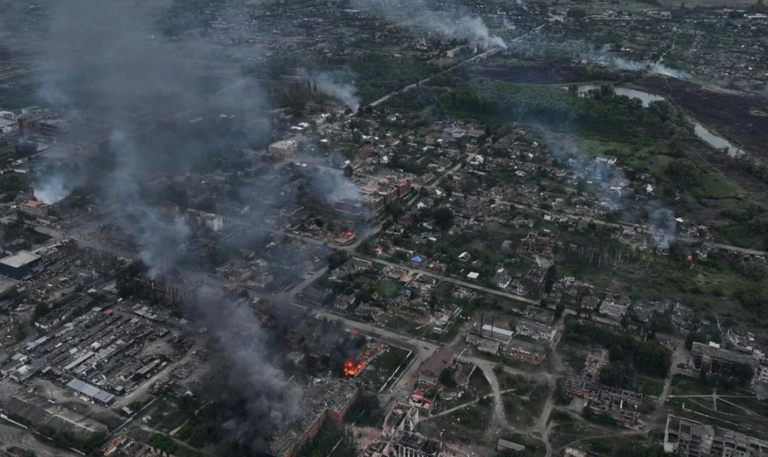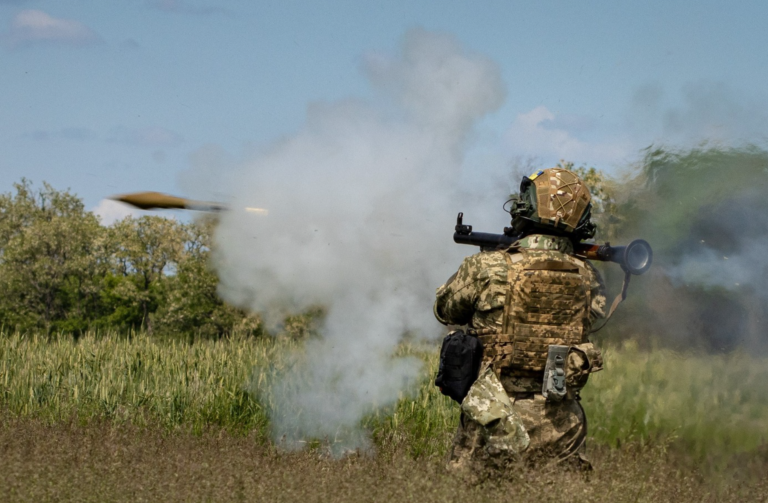Lebiazhe is located approximately 30 kilometers from Chuhuiv, near the Siverskyi Donets River. Before the full-scale invasion, 1,300 people lived here. By the end of the summer of 2022, 208 of them remained.
Gwara Media journalists met with the village head Oleksandr Nesmiyan and asked how the village lived in the first months of the full-on war and how it is recovering now.

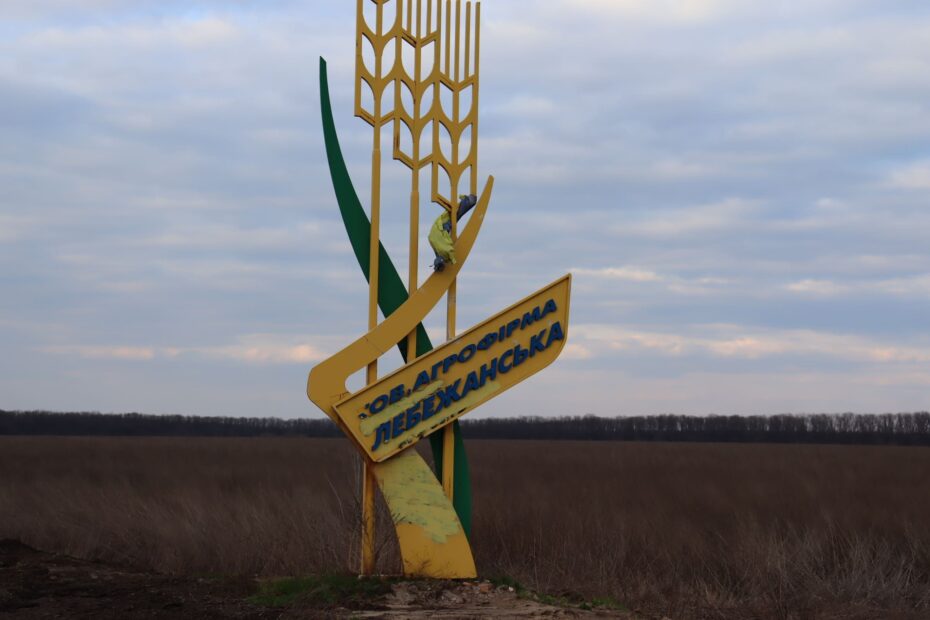
The gray zone
On the morning of Feb. 24, the villagers woke up to explosions. Russian troops began to advance from Martove, the settlement on the other bank of the Siverskyi Donets River, Nesmiyan recalls. Soon, the Ukrainian military also appeared: on Feb. 26, they blew up the bridge in Lebiazhe and Bazaliivka. Since then, the village has been in a gray zone – a cannonade was heard all around, and the connection was lost. The road between Korobochkine and Kupiansk was closed, and all other routes were shelled.

“If the bridges had not been blown up, they [Russian military – ed.] would have gone through us to Pechenihy, Kochetok,” Oleksandr Nesmiyan noted.
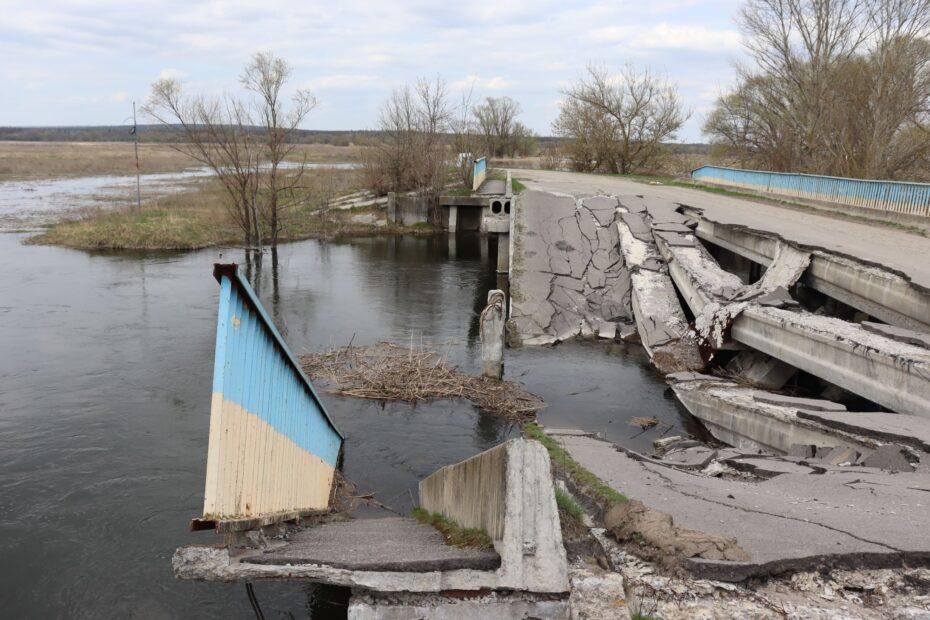
No later than Feb. 27, the 92nd Ivan Sirko Separate Mechanized Brigade (92 OMBr) entered Lebiazhe. The village head recalls, “They immediately went on the defensive, placed a cannon and an armored personnel carrier around the village’s perimeter at the exit. On the second day, they [Russian military — ed.] went to Shevchenkove in that direction. They [92 OMBr — ed.] quickly took off and left.”
The next day, the village began to be heavily bombarded. A total of 14 buildings were destroyed, including Nesmiyan’s house. On March 3, one of the Russian TV channels reported that the 92 OMBr resisted and was wiped out in the village of Lebiazhe, Chuhuiv district.
The most challenging times were at the beginning, after May 9, and in the summer. Lebiazhe was bombarded by aircraft, S-300 missile systems, hail cannons, etc. In August, people practically did not get out of cellars and basements, and they stayed there without electricity and gas.
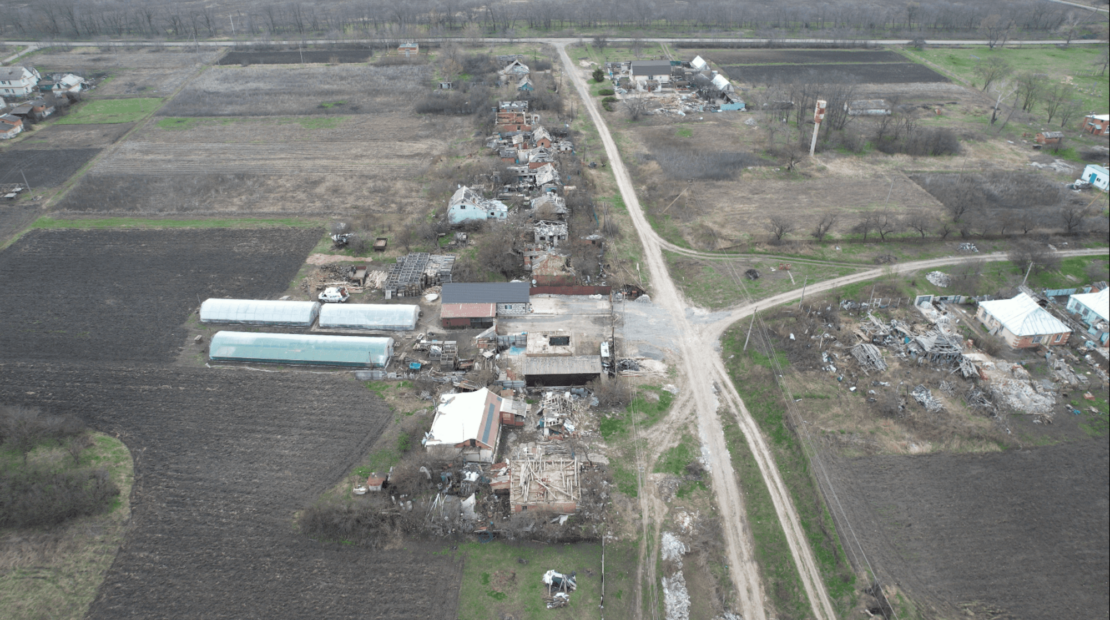
Russians in Lebiazhe
However, Russian troops were not stationed in the village. The Russians entered Lebiazhe only once – the scouts took three farm cars in Bazaliivka and arrived in the village on March 17.
“We were just giving out bread at the stall; I dispersed all the girls and went out to them. I was surrounded by 12 people. They asked: “Where are the nationalists?”. I said, “What nationalists? You have driven around the village: people are planting potatoes, busy. We don’t have nationalists,” the village head recalls.
Some of them spoke surzhyk. The Russians said that the Soviet Union, as before, would not exist; there would be Russia. “I won’t say anything with 12 machine guns pointed at me,” Nesmiyan said.
The next day, on April 18, the 125th Brigade of the Territorial Defense Forces entered Lebiazhe. They set up positions near the village. They restrained the enemy until autumn when the Ukrainian counteroffensive began. Currently, the military is near Bakhmut.
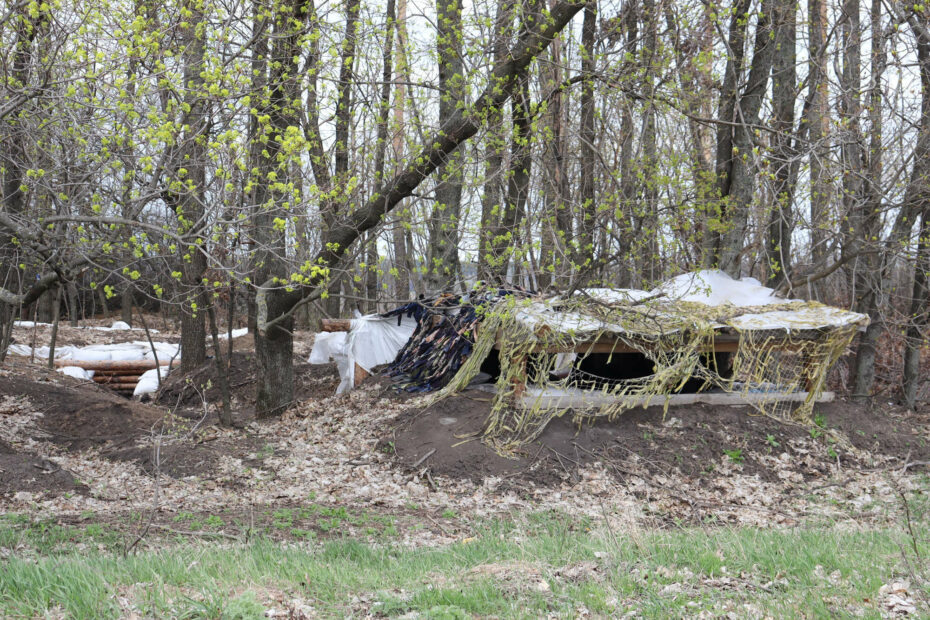
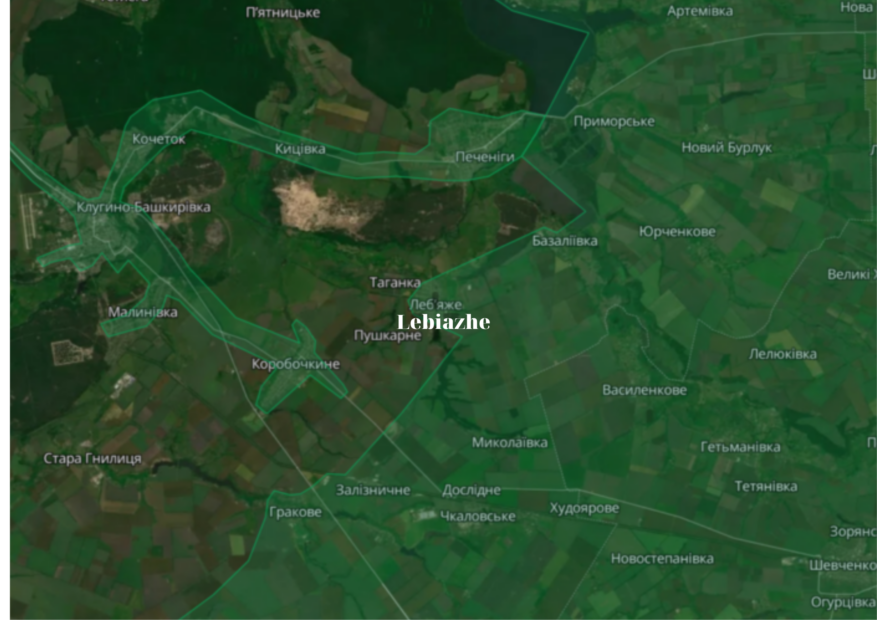
Humanitarian aid
After the full-scale invasion, the population of Lebiazhe grew to 2000. Relatives from larger settlements and internally displaced persons came to the residents to wait out the fighting. Products began to be raked out of stores.
“The increased number of residents was noticed by bread. Sometimes we cut the loaves into parts so there would be enough for everyone,” the village head recalls.
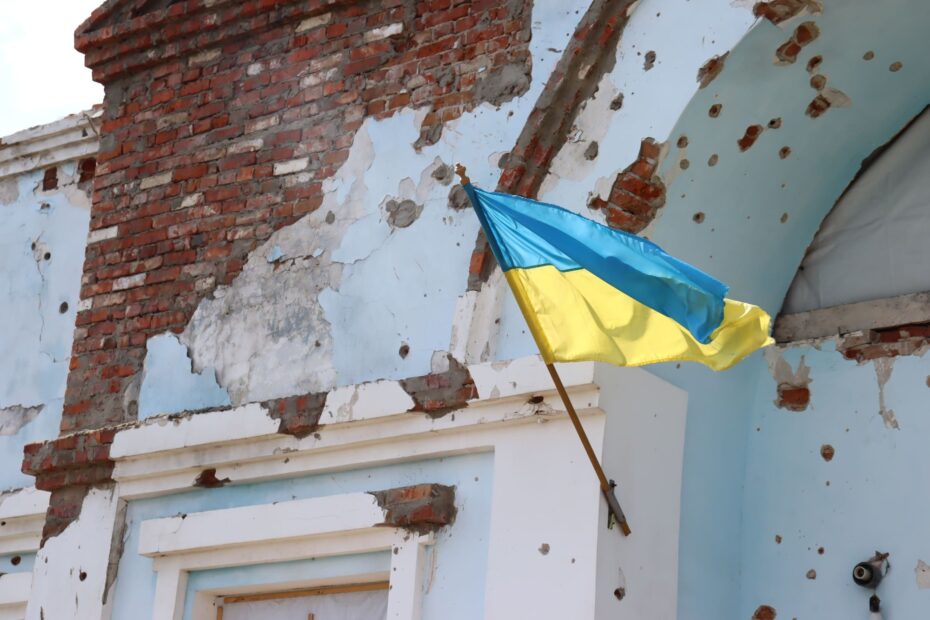
Volunteer Roman Zharko delivered flour, sugar, salt, and other things needed by people under fire, Nesmiyan notes. Later, the village head found a safer way to Chuhuiv via Korobochkine through the fields. They started supplying bread. Through the same road, people got to the district center. By the end of the summer, only 5% of the pre-war population remained: 200 adults and eight children. One child was born during a full-scale war.
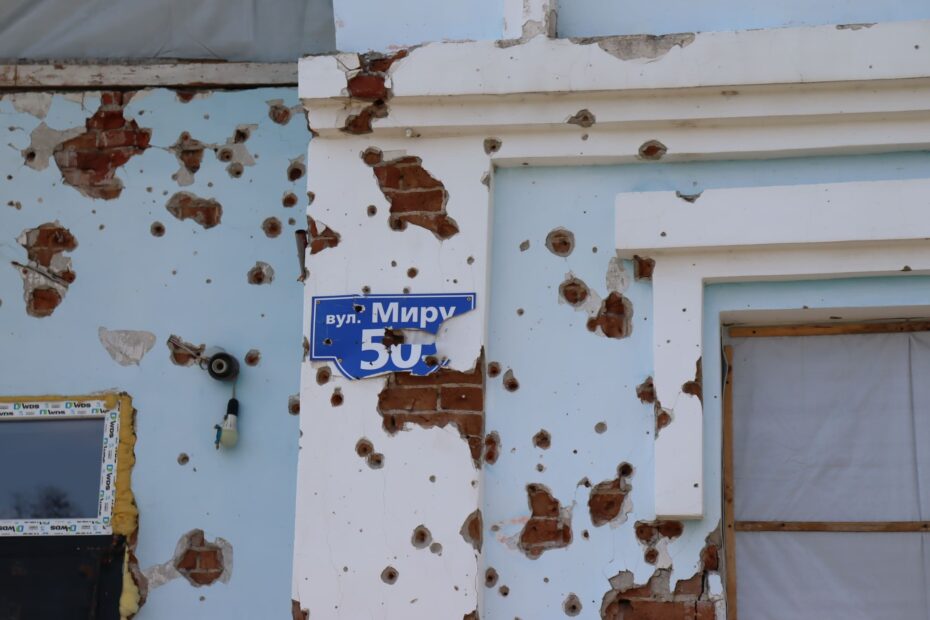
In May, the church representatives brought humanitarian aid to Lebiazhe. It was distributed in the local cultural center in the center of the village. At that time, the Russian troops shelled the village. A woman died.
During the entire full-on war, three people died in Lebiazhe, one in the village, and two at the bus station in Chuhuiv. The same number of locals were wounded. Two men are still in the hospital, and one is in Germany.
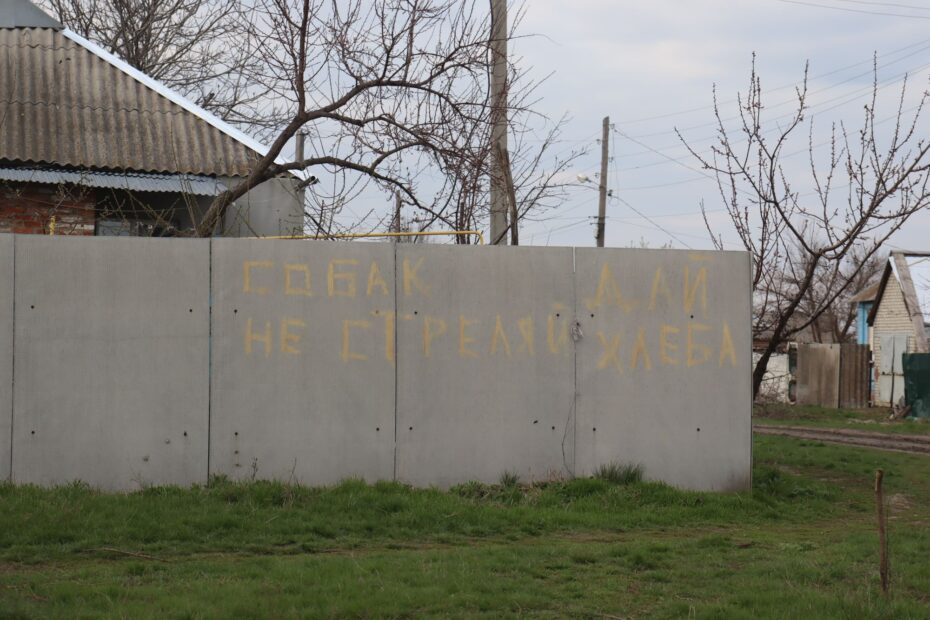
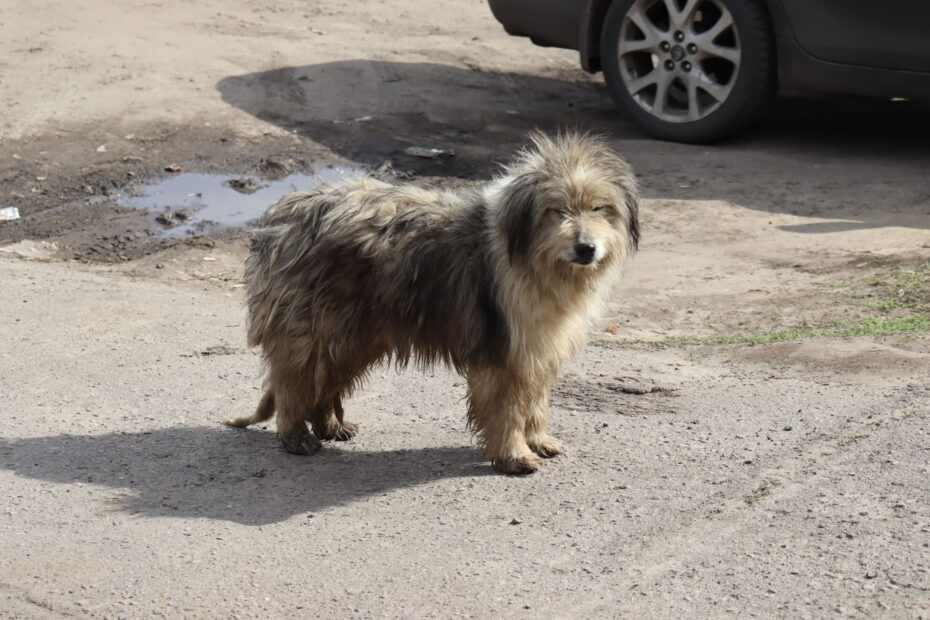
The school
For the first time, the educational institution was shelled on Feb. 27 from aviation; half of the windows were blown out. Russian troops caused great destruction in the summer. Then the villagers recorded two hits on the school, and almost half the building was destroyed.

“Half of the school was for younger children, and downstairs was a kindergarten. In total, about 120 children studied with us.
The school was renovated. We won the tender for insulation. Metal-plastic windows were almost everywhere, and heating batteries and doors were replaced in all classes. The sports hall was also renovated,” Oleksandr Nesmiyan notes.



New windows for the school have already been purchased. Nesmiyan hopes that someday they will be able to install them and the educational institution will work as before. However, with constant shelling, they are in no hurry to restore the building.

The school needs large-scale reconstruction. Currently, more than a hundred children are studying online. “Taking 120 of our children to study in another settlement all the time would require at least four buses,” Oleksandr said.
The restoration
People keep coming back to Lebiazhe. Now there are no problems with humanitarian aid. Three grocery stores work. Locals are gradually repairing their houses.
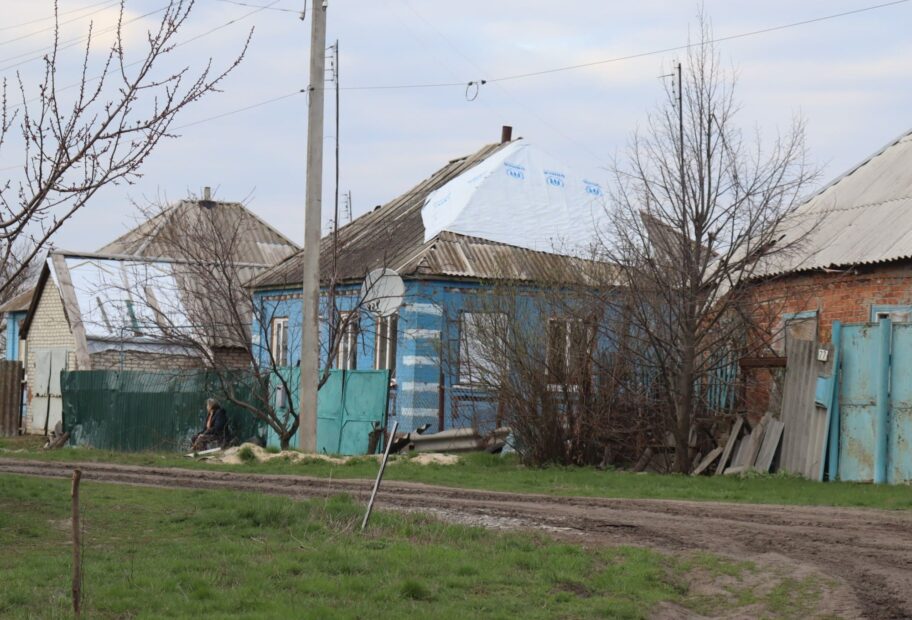
“The woman transfers money from Germany because she has nowhere to live. The roof and windows have already been installed, and the yard has been cleaned up a bit. We, Ukrainians, are like that – shelling, fighting, but we still gravitate to our native homes.
All the more so when people see that I am restoring. Some return, but not all have the means to rebuild quickly. Since the prices of the materials have risen sharply, they are waiting for humanitarian aid. Although they promise us a lot, only the NGO “Proliska” once brought their materials,” Oleksandr Nesmiyan notes.


Farmers demine the fields to sow them in time. Residents come to watch it.
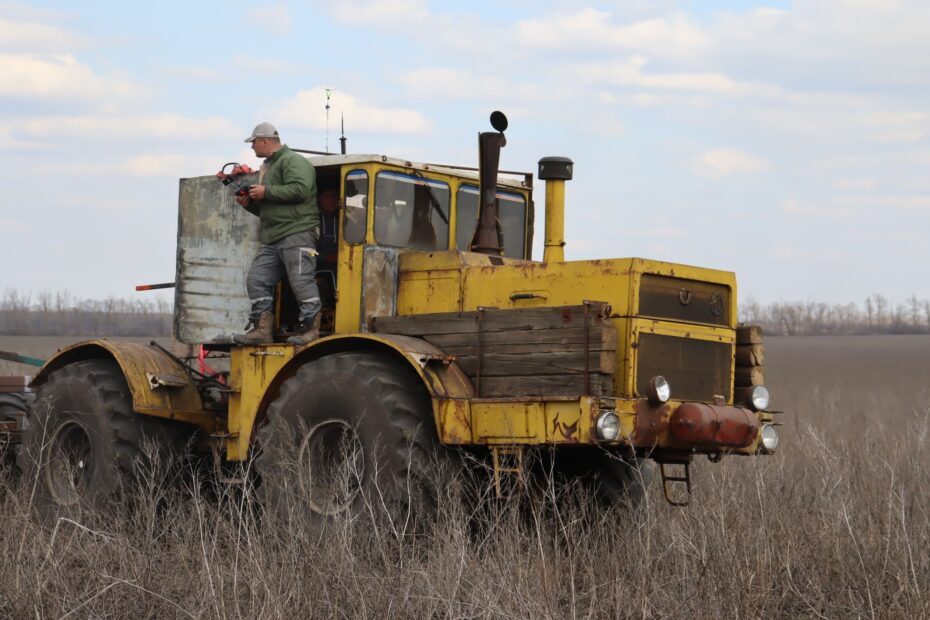
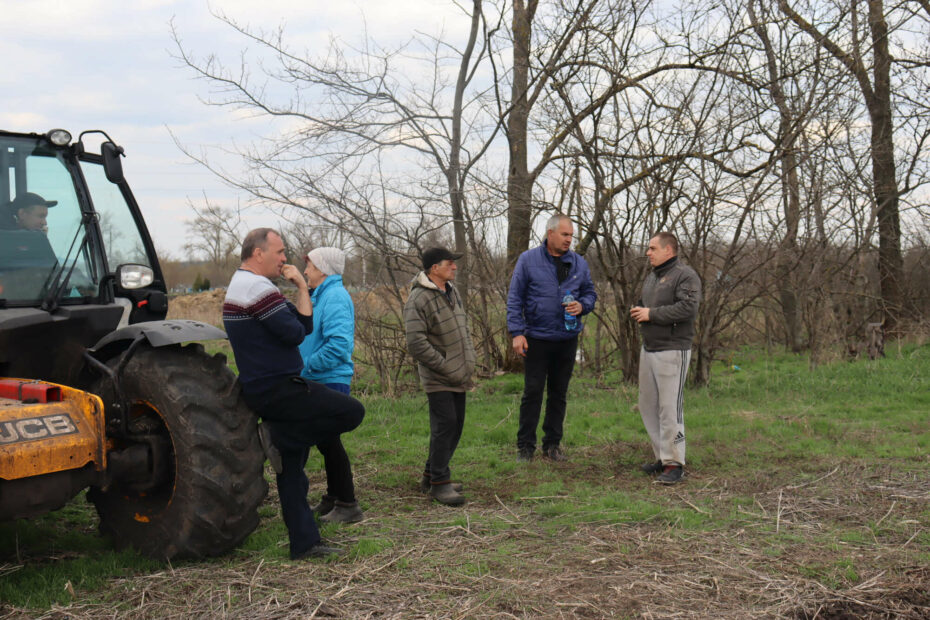
Read about Avdiivka, a ‘Post-Apocalyptic’ city on Ukraine’s front line
by Polina Kulish
Follow us on Twitter, Instagram and LinkedIn for more news, stories, and field reports by Kharkiv journalists.

